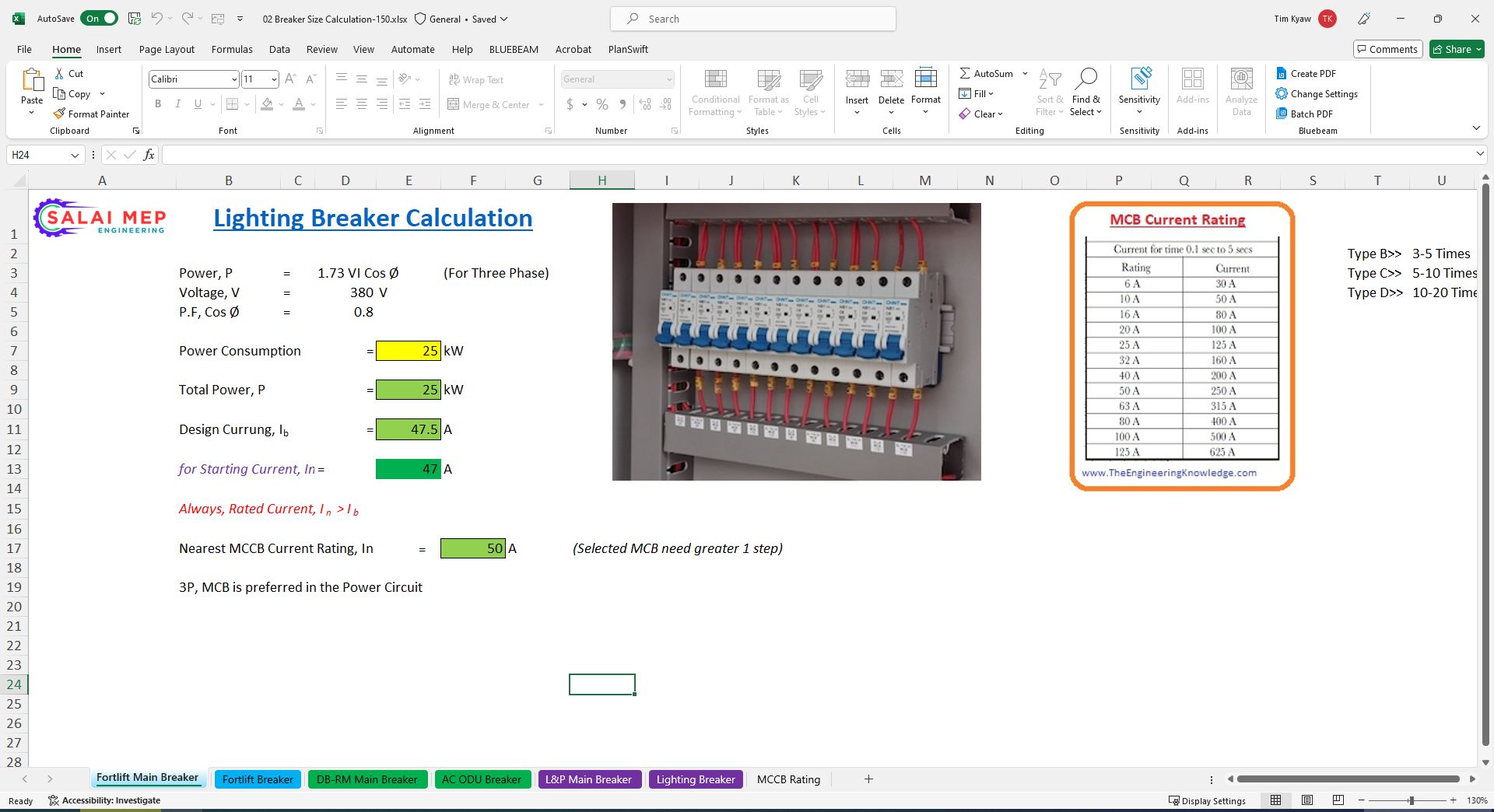Circuit Breaker Size Calculation is crucial to ensure the safety and efficiency of electrical systems. An appropriately sized circuit breaker protects the electrical circuit from overcurrent, which can cause overheating, damage, and potential fire hazards. Here’s a step-by-step guide to calculating the appropriate circuit breaker size:
Steps for Circuit Breaker Size Calculation
- Determine the Total Load:
- Calculate the total electrical load (in amperes) of the circuit. Sum the current (amperage) for all devices that will be connected to the circuit.
- For a simple calculation, use the formula:Current (I)=Power (P)Voltage (V)Current (I)=Voltage (V)Power (P)
- Example: For a 120V circuit with a total power of 2400W:Current (I)=2400𝑊120𝑉=20𝐴Current (I)=120V2400W=20A
- Apply a Safety Factor:
- According to the National Electrical Code (NEC), it’s common to apply a safety factor of 125% for continuous loads (loads expected to run for three hours or more).
- For continuous loads, multiply the total load current by 1.25.
- Example:Safety Current=20𝐴×1.25=25𝐴Safety Current=20A×1.25=25A
- Select the Circuit Breaker Size:
- Choose a standard circuit breaker size that is equal to or greater than the calculated load with the safety factor.
- Circuit breakers come in standard sizes (e.g., 15A, 20A, 25A, 30A, etc.).
- Consider Other Factors:
- Type of Load: Consider if the load is inductive (motors) or resistive (heaters), as inductive loads can have higher inrush currents.
- Voltage Drop: Ensure the breaker size accommodates potential voltage drops over long cable runs.
- Manufacturer Specifications: Always check the device and equipment manufacturer’s recommendations for breaker sizing.
Example Calculation
Let’s go through a detailed example to determine the circuit breaker size for an office lighting circuit.
Inputs:
- Total lighting load: 4800W
- Voltage: 240V
- Type of load: Continuous
Calculation Steps:
- Calculate the Total Load Current:Current (I)=4800𝑊240𝑉=20𝐴Current (I)=240V4800W=20A
- Apply the Safety Factor:Safety Current=20𝐴×1.25=25𝐴Safety Current=20A×1.25=25A
- Select the Circuit Breaker Size:
- The next standard size above 25A is 30A.
- Therefore, a 30A circuit breaker is appropriate for this load.
Additional Considerations
- Motor Loads:
- Motors can have high inrush currents at startup. The breaker must handle this without tripping unnecessarily.
- Typically, use a breaker rated at 125-250% of the motor full-load current for starting purposes.
- Wire Size:
- Ensure the wire gauge is appropriate for the breaker size to prevent overheating.
- For a 30A breaker, typically use 10 AWG copper wire (but always check local codes and standards).
- Code Compliance:
- Always adhere to local electrical codes and standards (e.g., NEC) when determining breaker size.
- Obtain any necessary permits and inspections for electrical work.
Conclusion
Accurate circuit breaker sizing is essential for the safety and functionality of electrical systems. By carefully calculating the load, applying appropriate safety factors, and considering the type of load and other relevant factors, you can select the correct circuit breaker size to protect your electrical circuits effectively. Always refer to local codes and standards to ensure compliance with safety regulations.
Note: All Password are [“salaimep” or “salaimep.com”]
Download |OneDrive, Google Drive
Also Download – Lighting Design Calculation Excel Sheet Download










I am engjneer electtic
Yes…bro